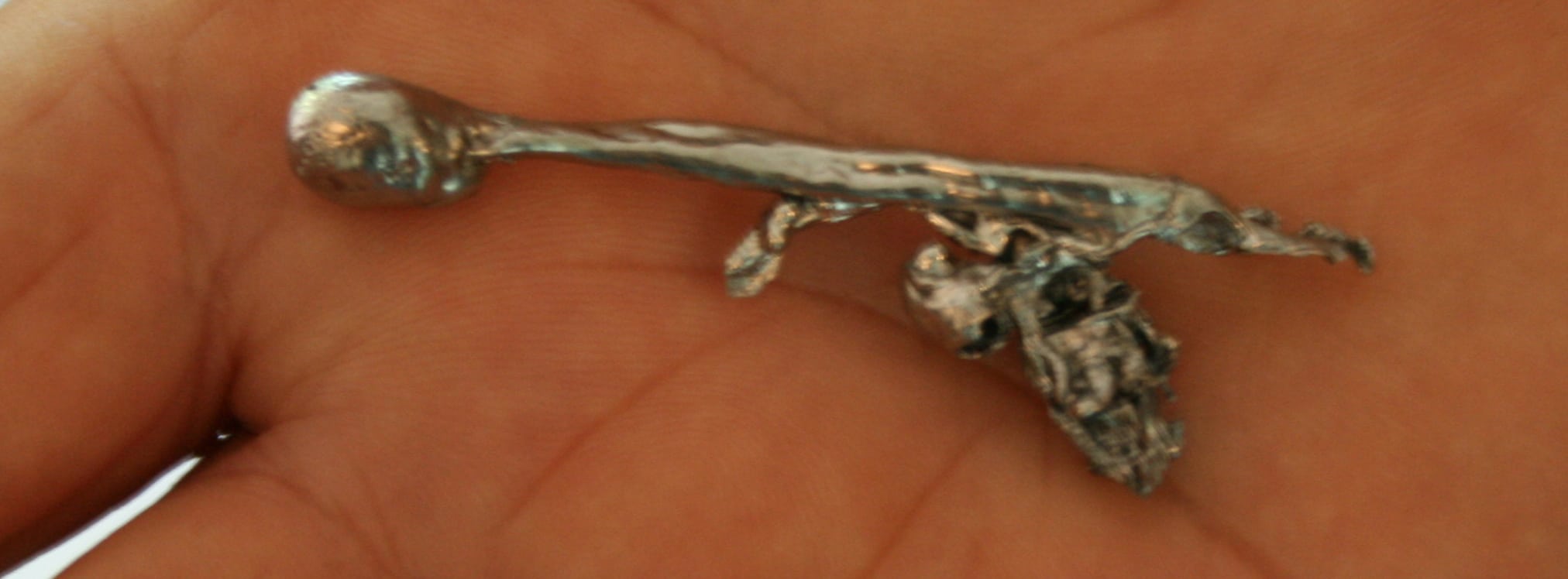Andreas Savva has chosen to deal with one of the strongest motivating forces – for bad or for good – of human life and perhaps the deepest cause for minor or major physic traumas: fear. I often think that the realization of the certainty of death makes man a priori a tragic being. In effect, I was immediately drawn to the topic he has chosen and to the way (to bring back experienced memories) in which he decided to work on it. Andreas told me that, when he was a child and while he was playing with other children his age out in the countryside, a snake suddenly appeared. In panic, his friends turned and ran, but he tripped and fell down, a fall which probably left him unconscious, because, when he came to, he found himself in front of a a woman who was trying to shake him out of the fear he felt using a very well-known ritual, that of “kalai”. I do not know much about it myself, but it is a kind of exorcism of fear by using liquid pewter, which, when put in a bowl of water, it takes different shapes, which are then “read” by the “healer”. According to the testimonies of his friends, however, during the minutes or seconds during which Andreas was laying on the ground, the snake went over his body without hurting him.
Are we dealing here with a collection of memory of an experience of fear or is Andreas Savva’s psychic trauma the consequence of an incident his friends imagined or made up? How much does the experiential memory of the sufferer differ or strange but not incomprehensible games of children’s imagination? Could it be that, after all, we are just what we make ourselves up to be, or do we choose our past? However the thematic core of Andreas Savva’s work is part of a wide field of cultural symbols related to fear experienced in childhood, and religious or folklore exorcism practices. The poetic and expressive way in which he narrated his snake experience to me reminded me of another story I had heard from a Portuguese friend of mine in Paris about the collective exorcism of fear in children in her home country, through a strange ritual dedicated to St. Bartholomew of te Sea (Sao Bartolomeo Do Mar). It is a custom which probably belongs to the folk and less so to the religious tradition and goes back more than three hundred years of collective experience and memory. Once a year, thousands of children are given by their parents to specially trained “plungers” which plunge them three times in the ice cold waters of the Atlantic Ocean to liberate them from their fears, from the spirit of the devil, but also from stammering and from epilepsy. From what I realized, in both occasions, water plays a main symbolic-purifying role; the pewter ritual which we hope Andreas will teach to us on the spot, holds a great part of the calm mysticism of the East, while the Sunday baptism in the ice cold Atlantic waters with approximately thirty thousand children crying in pain is only meaningful if seen as a harsh homeopathy treatment.
Dr Niki Loizidi
(from the catalogue of the exhibition “ Trauma and Therapy Cypriot Antiquity and Contemporary Art”, curated by Dr Niki Loizidi, Paphos Archaeological Museum, Paphos, Cyprus, 2014).

